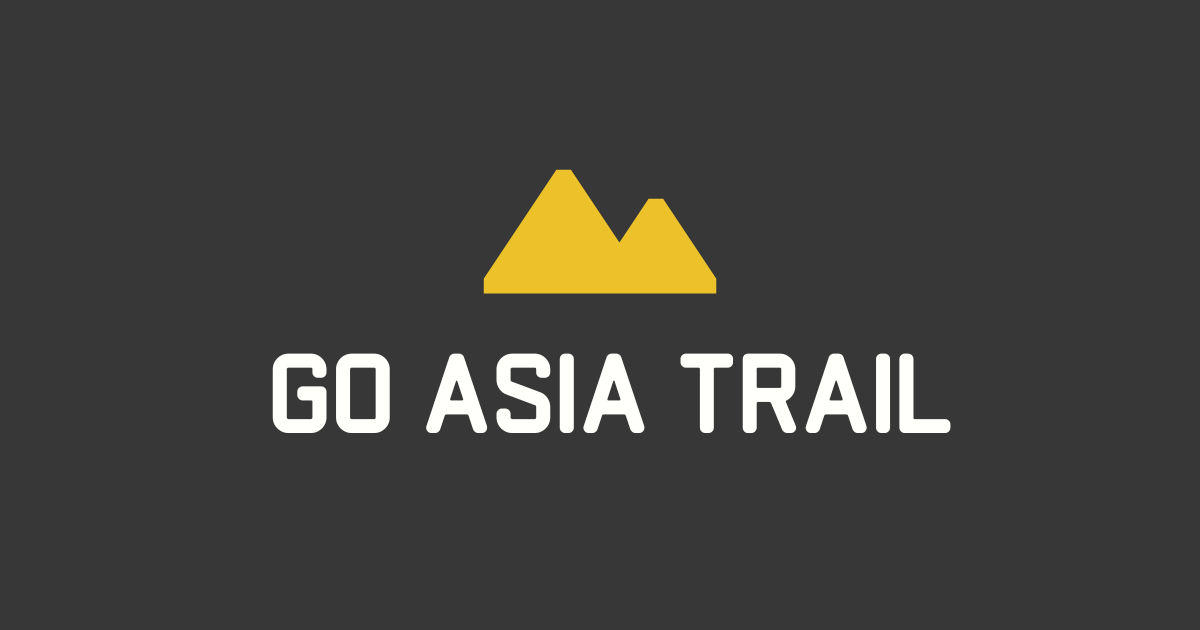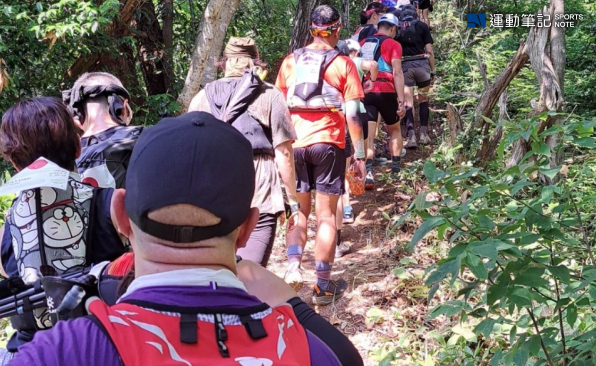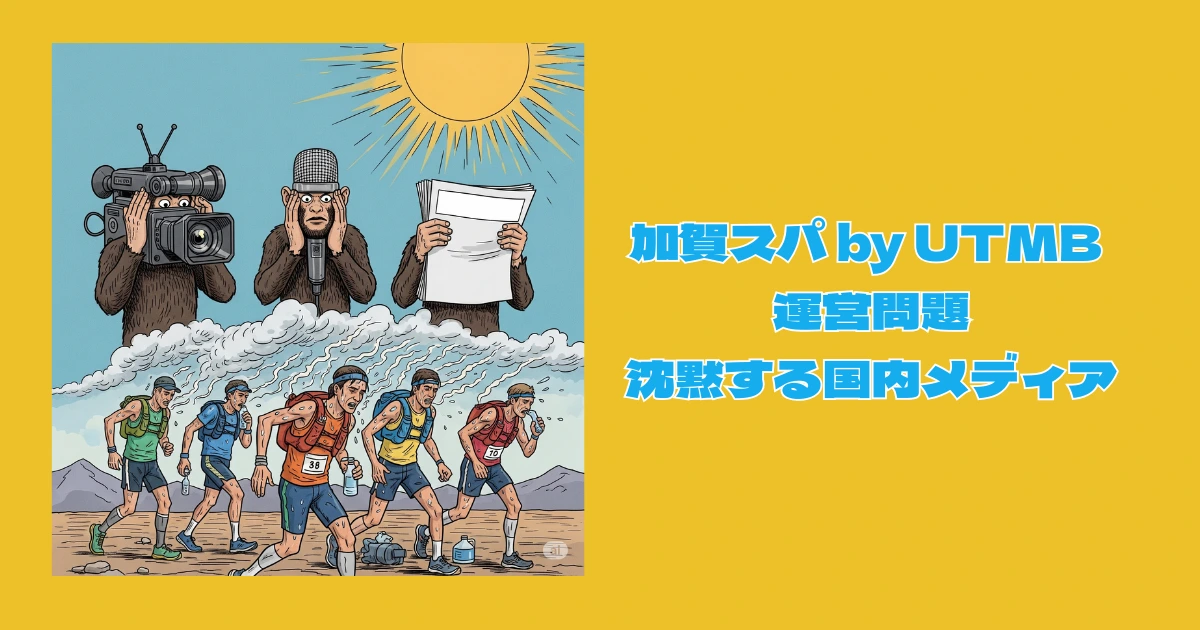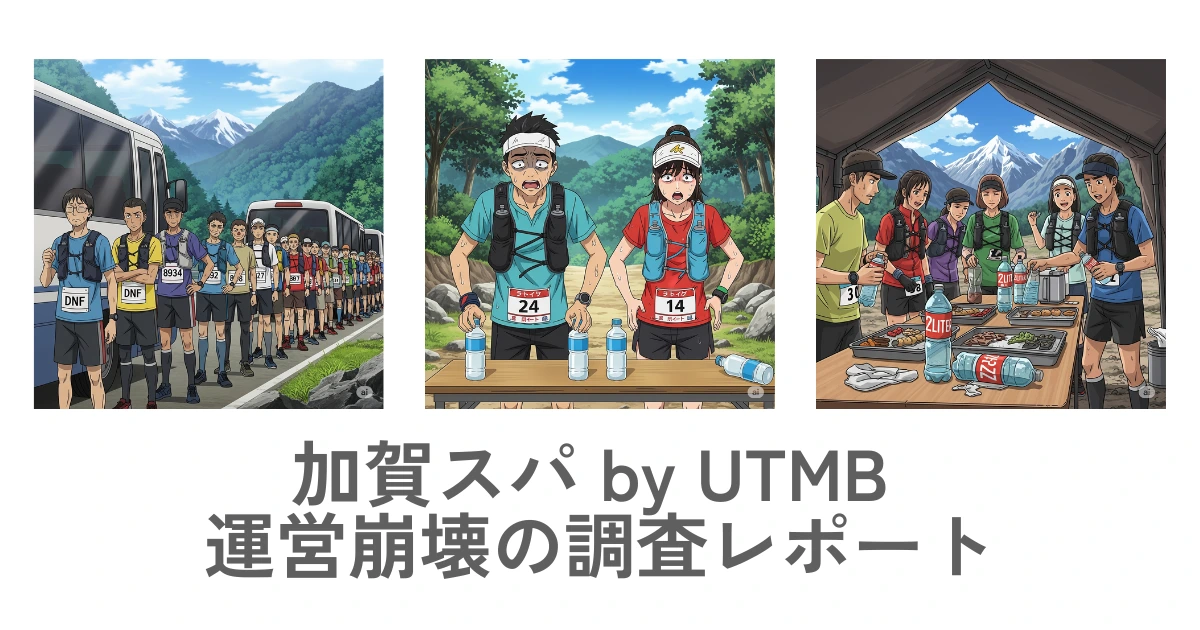Last weekend (June 21-22), the Kaga Spa Trail Endurance 100 by UTMB, Japan's first by UTMB race, was held in Yamanaka Onsen, Kaga City, Ishikawa Prefecture.
I myself did not participate this time as either an athlete or a volunteer, so this is not a story I actually experienced, but from various articles, social networking posts, and stories from acquaintances, the situation is that quite a few of them are under fire. The opinions of participants, especially those from overseas, have been a storm of criticism, and to be honest, it is an abomination that "has brought the reputation of Japanese trail running races down to the studs.
Having participated in overseas trail races in Asia and Europe for about 10 years, I can honestly say that this is the first time I've ever seen such a terrible thing. The management company of Kaga Spa is OSJ, which you all know. The event management is so bad that it is derided as "OSJ quality," the quality of the aids is poor, and in return it is cheaper than other races, but it is one of the oldest trail running race management companies and has many repeaters.
I had hoped that joining the UTMB franchise would improve the event management capabilities and produce a high quality race, but... it is no exaggeration to say that OSJ quality has been brought directly to an international event, which has left a big stigma in the history of trail running races in Japan. It would not be an exaggeration to say that the OSJ quality was brought to the international event as it was.
The Hong Kong Media's Critical Review
One example is an article in the Hong Kong sports media, "Running Biji," describing the experience of a Hong Kong runner who entered the 50 km race. There are many opinions scattered about, but I think most of them can be summed up in this content.
The chaos during the preparation and start of the race:.
- The day before the race, we had to wait more than 30 minutes in high temperatures for a shuttle bus to the venue. This could lead to physical exhaustion before the race.
- Even at the start of the race, the roads were smooth at first, but as the runners entered the mountain roads, the roads became narrow and soon there were intermittent "traffic jams" for more than 30 minutes, disrupting the pace of the runners.
Problems at aid stations (CPs):.
- The rations at the CPs were different from those indicated in the event. For example, there were no bananas at all at the water station at the 17 km mark, which should have been provided.
- Insufficient water supply and quality issues were also noted. The weather was hot, and many runners had to cool themselves by covering their heads with water. In addition, the cola provided at the supply station was room temperature, curry and rice was salty, and watermelon was handed out only after asking for it, which was an inadequate supply system.
- There were sections where there were no water stations for as long as 10 km, forcing many runners to stall and take a break due to lack of water along the way.
Dangers on the course and unclear instructions:.
- Even after crossing the second major mountain, the course unexpectedly continued to climb and descend steeply, with slippery descents and dangerous narrow paths.
- Runners were concerned about their time at the end of the race and rushed down the descent, causing many to fall.
Poor handling of retirements (DNFs):.
- At the CP at the 45km point, many runners sat down to rest, the atmosphere was poor, and there were no words of encouragement.
- Several runners, including 7媽, were so intimidated by these words that they decided to retire.
- The staff responded that they did not know when a car would arrive to collect the retired runners, causing confusion.
- Runners waited for over an hour and 20 minutes for a car from 6:40 PM to 8:00 PM.
- The small number of shuttle buses (one 22-passenger, two 7-passenger, and one 11-passenger) and the limited number of people they could carry at one time meant that many runners had to wait a long time; even 7Matsu waited until 9:10 PM to finally leave the venue, but dozens of people were still waiting.
Lack of support after the finish line:.
- When 7媽 arrived at the finish line at 9:40 p.m., there was no assistance from staff regarding baggage pickup or transportation.
- They were also rushed to purchase shuttle bus tickets (1,500 yen) and told to take 5 minutes to the temporary station, a difficult situation for unfamiliar runners.
- It took until 11 PM to return to the hotel, adding unnecessary fatigue and stress to the retirees.
Overall disorganization and high DNF rate:.
- The situation was even more dire in the 100km division, where there were reports of food and water rationing shortages.
- As a result, the 100km race had a very high abandonment rate, with 709 of the 1164 participants (approximately 61%) DNFing (dropping out of the race). This suggests that poor event management directly prevented many runners from finishing the race.
- After the race, many runners heavily criticized the organizers, and this issue is still being discussed on social networking sites.
Temperature Differences with Japanese Runners
Now, as for the opinions of Japanese runners, who make up the majority of participants, my impression is that they are not as vehement as overseas participants, although of course there are those who condemn the terrible management of this event. Of course, many of them had participated in OSJ races in the past because they have enough running ability to enter Kaga Spa, so perhaps they were immune to OSJ quality compared to overseas runners.
This may be a part of the Japanese national character, but I have the impression that there are relatively few people who criticize OSJ openly because they have been informed of the hard work involved in running the event, such as "looking forward to the next race" and behind-the-scenes information from the volunteers who participated in the race.
However, it is true that many Japanese runners who have experience in overseas races are very critical of the way the Kaga SPA was run this time. I am also on this side. I don't think that Japan's ability to run a major event that attracts runners from overseas is very high. Hong Kong and China have better management capabilities and much more advanced safety measures. Not all overseas events fall under this category, and it is up to the event organizers, but I think Japanese organizers should learn more about how to manage overseas races. I have felt this for some time.
It is also very disappointing that there has been no mention at this point regarding the Japanese media, which specializes in trail running and running, regarding the problems with the management of this Kaga SPA. I can't help but wonder why there is no pointing out on Youtube or owned media regarding the problems with the operation. Considering the safety aspects of the situation, such as the lack of water during the heat wave and the heat stroke, the problems should be pointed out. I would like to see more pressure on the media to point out these issues, as it would be a good opportunity to improve the quality of trail running races in Japan.
Overwhelming lack of sponsors
To begin with, the reason why the management of the event is so terrible is ultimately the lack of funds.

The essence of a sporting event is an advertising business, and it is only possible with advertisers (sponsors). Professional baseball, the J-League, professional wrestling, and the like are also made possible by corporate sponsors, and marathons can also be run because of the many corporate sponsors. The entry fee paid by runners is used to cover the direct costs of the runners (measurement chips, bibs, participation prizes, etc.) and is not relied upon for revenue (the event cannot be run with only the runners' entry fee; the runners' participation fee alone is not enough to run the event. (If it is a municipal presentation, some of the money will be taxed...)
Kaga SPA has very few sponsors compared to other events: HOKA, SUUNTO, Nikke, and Powersports. Of these, HOKA and SUUNTO are the main sponsors of the entire by UTMB and this is coming down from the top, and Powersports is the OSJ's management company (it is a family member), and the only real new sponsor that has been acquired is Nikke, a fiber manufacturer in Japan. This is a lack of sales effort.
If we could get beverage and food manufacturers to sponsor us, they would at least provide us with drinks and food that they would serve at the aids, which would solve the shortage of food and drinks at the aids. I think if we approached a few of the major beverage companies, especially if it is an international event with by UTMB class, one company somewhere would be willing to do it...
I am not sure how much sponsorship money we are getting from Nikke, but I don't think it is that big of a sum, and I think if we had the funds, we could have made more aids available.
They did a crowd funding in the past, but they only raised 1.86 million yen. They didn't get the full amount, but the crowdfunding business took a fee (22% total for Campfire, or about 400,000 yen), and they also had to send back goods in return, so they were left with less than 1,000,000 yen.
Frankly speaking, if they were going to devote resources to the crowd funding project, it would have been better to do the legwork and go around to the sponsors.
That's all for today.





